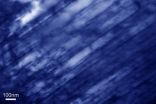(Press-News.org) Researchers from North Carolina State University have developed a new technique for creating stronger, lightweight magnesium alloys that have potential structural applications in the automobile and aerospace industries.
Engineers constantly seek strong, lightweight materials for use in cars and planes to improve fuel efficiency. Their goal is to develop structural materials with a high "specific strength," which is defined as a material's strength divided by its density. In other words, specific strength measures how much load it can carry per unit of weight.
Researchers at NC State focused on magnesium alloys because magnesium is very light; on its own, though, it isn't very strong. In the study, however, the researchers were able to strengthen the material by introducing "nano-spaced stacking faults." These are essentially a series of parallel fault-lines in the crystalline structure of the alloy that isolate any defects in that structure. This increases the overall strength of the material by approximately 200 percent.
"This material is not as strong as steel, but it is so much lighter that its specific strength is actually much higher," says Dr. Suveen Mathaudhu, a co-author of a paper on the research and an adjunct assistant professor of materials science and engineering at NC State under the U.S. Army Research Office's Staff Research Program. "In theory, you could use twice as much of the magnesium alloy and still be half the weight of steel. This has real potential for replacing steel or other materials in some applications, particularly in the transportation industry – such as the framework or panels of vehicles."
The researchers were able to introduce the nano-spaced stacking faults to the alloy using conventional "hot rolling" technology that is widely used by industry. "We selected an alloy of magnesium, gadolinium, yttrium, silver and zirconium because we thought we could introduce the faults to that specific alloy using hot rolling," says Dr. Yuntian Zhu, a professor of materials science and engineering at NC State and co-author of the paper. "And we were proven right."
"Because we used existing technology, industry could adopt this technique quickly and without investing in new infrastructure," Mathaudhu says.
INFORMATION:
The paper, "Ultrastrong Mg-Alloy via Nano-Spaced Stacking Faults," was published online March 12 in Materials Research Letters and was co-authored by NC State Ph.D. students W.W. Jian, W.Z. Xu and H. Yuan; postdoctoral researcher Dr. G.M. Cheng; Dr. Carl Koch, Kobe Steel Distinguished Professor of Materials Science and Engineering at NC State; Dr. M.H. Tsai, a former visiting scientist at NC State; and Dr. Q.D. Wang, of Shanghai Jiaotang University. The work was supported by the U.S. Army Research Office.
New technique creates stronger, lightweight magnesium alloys
2013-03-13
ELSE PRESS RELEASES FROM THIS DATE:
Polycystic ovary syndrome puts glucose control in double jeopardy
2013-03-13
Polycystic ovary syndrome, a condition affecting about 10 percent of women and characterized by excess male hormone and increased risk of diabetes and heart disease, appears to cause a sort of double jeopardy for those struggling the hardest to control blood sugar levels, researchers report.
Humans use insulin and other non-insulin mechanisms to convert blood sugar, or glucose, into energy and control levels in the blood, where it becomes a destructive force.
A new study in the Journal of Clinical Endocrinology & Metabolism comparing 28 healthy women to 28 women with ...
Chicken pox vaccine saving children's lives
2013-03-13
The widespread introduction of a chicken pox vaccine in Australia in 2006 has prevented thousands of children from being hospitalized with severe chicken pox and saved lives, according to new research.
In a national study of chicken pox admissions at four participating Australian children's hospitals, researchers found the number of children hospitalized with chicken pox or shingles had dropped by 68% since 2006.
The research was led by Associate Professor Helen Marshall from the University of Adelaide and Women's and Children's Hospital, and researchers of the Paediatric ...
Neuron loss in schizophrenia and depression could be prevented with an antioxidant
2013-03-13
Philadelphia, PA, March 13, 2013 – Gamma-aminobutyric acid (GABA) deficits have been implicated in schizophrenia and depression. In schizophrenia, deficits have been particularly well-described for a subtype of GABA neuron, the parvalbumin fast-spiking interneurons. The activity of these neurons is critical for proper cognitive and emotional functioning.
It now appears that parvalbumin neurons are particularly vulnerable to oxidative stress, a factor that may emerge commonly in development, particularly in the context of psychiatric disorders like schizophrenia or bipolar ...
What can sports teams learn from the manufacturing industry? Plenty
2013-03-13
TORONTO -- What can sports teams learn from the manufacturing industry? Plenty, according to Timothy Chan of the University of Toronto (U of T) and Douglas Fearing of the Harvard Business School.
Using statistics from the 2012 Major League Baseball season, Chan and Fearing found that positional flexibility – the ability of a player to play multiple positions – is valuable, responsible for up to 15 per cent of the team's runs, as was the case with the Chicago Cubs. Other teams like the Washington Nationals and the Tampa Bay Rays were less robust to injuries.
"Flexibility ...
New approaches for controlling pesticide exposure in children
2013-03-13
New research on household pesticide contamination emphasizes the need for less reliance on pesticides and more emphasis on neatness, blocking cracks where insects can enter and other so-called "integrated pest management" (IPM) measures, scientists have concluded. Their study appears in the ACS' journal Environmental Science & Technology.
Chensheng Lu and colleagues cite previous studies showing that urban, low-income, multifamily, public housing dwellings are prone to severe pest infestation problems. Families in Boston public housing developments, for instance, rank ...
Paving the way for greater use of ancient medical knowledge
2013-03-13
Scientists are reporting an advance toward overcoming a major barrier to tapping the potential of traditional Chinese medicine (TCM) and India's Ayurvedic medicine in developing new and more effective modern drugs. Their report appears in ACS' Journal of Chemical Information and Modeling.
Andreas Bender and colleagues explain that TCM has made key contributions to modern medicine. In the world's largest international clinical trial, for instance, scientists concluded that Artesunate, a derivative of the Chinese herb qinghao, should replace quinine as a treatment for ...
Breakthrough in battle against leukemia
2013-03-13
Scientists at Griffith University's Institute for Glycomics and The Saban Research Institute of Children's Hospital Los Angeles have discovered a critical weakness in leukaemic cells, which may pave the way to new treatments.
The research team has demonstrated that leukaemic cells can be eradicated by removing a carbohydrate modification displayed on the cell's surface.
Director of Griffith University's Institute for Glycomics, Professor Mark von Itzstein is the Australian team leader. He said the discovery is an important advance against leukaemia, a cancer of malignant ...
It's all in the way we move
2013-03-13
When, how and why modern humans first stood up and walked on two legs is considered to be one of the greatest missing links in our evolutionary history. Scientists have gone to the far ends of the earth – and the wonderful creatures in it - to look for answers to why we walk the way we walk.
In the latest such search, researchers from the University of the Witwatersrand in Johannesburg (South Africa) have taken a closer look at bipedal kangaroos and wallabies and how they move compared to their cousin-marsupials, such as the quadrupedal Tasmanian wolf.
In an article ...
Paraffin encapsulated in beach sand material as a new way to store heat from the sun
2013-03-13
The search for sustainable new materials to store heat captured from the sun for release during the night has led scientists to a high-tech combination of paraffin wax and sand. Their report on the heat-storing capability of this microencapsulated sand appears in ACS Sustainable Chemistry & Engineering.
Benxia Li and colleagues explain the need for better materials that can store and release heat. These so-called "phase-change" materials" (PCMs) are essential, for instance, for storing heat from the sun for use in providing energy at night or during cloudy periods. PCMs ...
Doing business with a parrot
2013-03-13
This press release is available in German.
VIDEO:
Muffin and 13 other cockatoos showed the skills to wait and trade 'normal' for 'better' or 'more' nuts.
Click here for more information.
Waiting: a clever move!
In the 70ties, self-control of human infants was investigated using the prominent 'Stanford Marshmallow Experiment': the children were presented with a marshmallow and ...



